Kopi Luwak Kaffee – mehr als teurer Katzen-Kot?
Aus dem Dschungel Südostasiens, von einer seltenen Katzenart gefressen und fermentiert, in ganz kleinen Mengen nur exportiert.
Das sind einige der vermeintlichen Besonderheiten des Kopi Luwak, auch Katzenkaffee genannt. Durch ein sehr gutes Marketing umgibt diesen Kaffee eine mystische Aura. Ich habe mich näher mit dem Kaffee und seiner Herkunft beschäftigt. Dabei bin ich vor allem auf sehr unschöne Aspekte gestoßen.
Herkunft des Kopi Luwak
Der Kopi Luwak kommt aus Südostasien. Dort wird er von örtlichen Farmern produziert und dann in die ganze Welt exportiert. Die Ursprünge dieses Kaffees gehen auf Indonesien zurück. Die dortigen Bewohner hatten als Erste die Idee, die ausgeschiedenen Kaffeekirschen weiter zu verarbeiten.
Die Bezeichnung Katzenkaffee
Die Bezeichnung Katzenkaffee kommt von den katzenartigen Tieren, die die Fermentation übernehmen (dazu gleich mehr). Die Fleckenmusangs, oder auch Schleichkatzen genannt, gehören zur Familie der Civet Katzen. Der Kopi Luwak wird daher auch häufig als Civet Coffee bezeichnet.
Das Besondere an Kopi Luwak
Das Außergewöhnliche am Katzenkaffee ist seine Fermentation. Dieser Prozess beschreibt die spezielle Gärung, bei der organische Stoffe – in unserem Fall Kaffeebohnen – umgewandelt werden.
Bei der Nassaufbereitung von Kaffee werden die Kaffeebohnen aus der Kaffeekirsche gelöst und dann in großen Tanks mit viel Wasser fermentiert. Beim Kopi Luwak läuft dieser Prozess anders ab.
Die Civet Katzen fressen reife Kaffeekirschen. In ihrem Magen wird der Kaffee dann fermentiert. Die anschließend wieder ausgeschiedenen Kaffeebohnen werden gesammelt und weiterverarbeitet. Nach dem Waschen und Rösten halten die Farmer dann einen Kaffee in den Händen, der sich rein optisch nicht sonderlich von anderen Kaffees unterscheidet.
Durch den ungewöhnlichen Fermentationsprozess wird dem Kaffee aber ein besonderes Aroma nachgesagt. So soll er den Geschmack des Dschungels widerspiegeln.
Der angebliche Geschmack des Dschungels
Bei einer meiner letzten Verkostungen hatte ich die Gelegenheit, einen Kopi Luwak zu probieren. Ich war vorab sehr gespannt was mich erwarten würde. Ich hatte schließlich schon viel von diesem besonderen Kaffee gehört und gelesen.
Meine Vorfreude wurde leider alles in allem nicht erfüllt. Insbesondere das nur mittelstarke Aroma und der pelzige Abgang haben mich nicht überzeugt.
Mein Fazit war – und bisher wurde ich nicht vom Gegenteil überzeugt – dass der Katzenkaffee ein guter Kaffee ist. Allerdings nicht so gut wie sein Ruf und nicht mal ansatzweise so gut wie sein Preis vermuten lässt.
Nur um euch eine Einschätzung zu geben: Die eine Tasse damals hat mich schlappe 20 Euro gekostet. Der Kilopreis liegt derzeit bei circa 800 Euro.
Diesen Preis kann der Kaffee durch seinen Geschmack auf keinen Fall rechtfertigen.
Die Geschichte des Kopi Luwak
Aber wieso ist der Katzenkaffee überhaupt so teuer, wenn nicht wegen seines Geschmacks? Ich habe zu Anfang vermutet, dass es bei diesem Kaffee abläuft wie bei der Trüffelsuche. Die Farmer lassen ihre „Trüffelschweine“ los und diese finden dann die ausgeschiedenen Kaffeebohnen. Da die Tiere speziell abgerichtet sein müssen und nur wenig Kaffee-Kot produziert wird, ist der Kaffee so teuer. Meine Vorstellung der “Trüffelschweine” war eine sehr romantische. Im Nachhinein muss ich sagen, dass mir diese Version besser gefällt als die Wahrheit.
Der Preis ist zu einem sehr großen Teil einfach nur eine geschickte Marketing-Masche.
Fangen wir aber von vorn an.
Den Kopi Luwak gibt es in Südostasien schon länger, wahrscheinlich schon einige Jahrzehnte. Er galt damals als außergewöhnlicher, aber trotzdem normaler Kaffee. Seinen internationalen Durchbruch hatte er 1991. Der Brite Tony Ward war zu Besuch in Indonesien und brachte seinen Lieben daheim ein Kilo des Katzenkaffees mit.
Seine Intention war es, dieses sonderbare Produkt zu Hause zu präsentieren. Doch nicht nur seine Familie, sondern auch seine Landsleute bekamen Wind von dem besonderen Kaffee aus Fernost. Die besondere Herstellung und seine Seltenheit – bis dahin jedenfalls – verliehen dem Kaffee automatisch etwas Exotisches und damit Geheimnisvolles. Von da an war der Katzenkaffee aus exklusiven Lebensmittelläden und der gehobenen Gastronomie nicht mehr wegzudenken.
Hinzu kam, dass von dem Kaffee angeblich nur eine halbe Tonne pro Jahr hergestellt wurde. Und wie immer, wenn eine hohe Nachfrage auf ein knappes Angebot trifft, ging der Preis explosionsartig nach oben.
Dieser Umstand lockte dann auch eher zwielichtige Gestalten an, die im Kopi Luwak eine Möglichkeit auf schnelles Geld sahen. Um das zu erreichen, musste die Produktionsmenge deutlich erhöht werden. Natürlich nicht offiziell, dann wäre ja der Preis gefallen.
Jetzt lassen sich aber freilebende Wildkatzen so schlecht verfolgen. Auch ihre “Produktion” von Kaffee-Katzen-Kot folgt keinem festen Plan. Die Farmer konnten also nicht kalkulieren, wann sie wieder neue Ware herstellen konnten.
Die „Lösung“ für dieses „Problem“ finden die Hersteller in der Käfighaltung.
Sie fangen die Civet Katzen in großen Mengen, stecken sie in Käfige und geben ihnen nur noch Kaffeekirschen zu fressen. Der Kotbehälter steht auch gleich mit im Käfig, so dass die wertvollen Ausscheidungen direkt aufgefangen werden können.
Auf diese Weise kann die Produktion drastisch erhöht werden und damit der Gewinn stark gesteigert werden.
Offiziell liegt die Produktion übrigens immer noch bei 500 Kilogramm im Jahr. Nach realistischen Schätzungen lag die Produktion im Jahr 2013 aber bereits bei 50 Tonnen.
Massive Tierquälerei bei der Herstellung
Wie ihr wahrscheinlich aus dem bisherigen Artikel herauslesen konntet, bin ich kein Fan dieser Kaffeeproduktion.
Civet Katzen sind Wildtiere, die sehr viel Bewegung brauchen. Zudem sind sie sehr scheue, nachtaktive Einzelgänger. Der Platz, den sie sonst im Dschungel für sich alleine haben, müssen sie sich in Käfighaltung mit 50 anderen Tieren teilen. Aber auch nur, wenn sie Glück haben. Ein Video von PETA zeigt, dass die Tiere nur das circa vierfache ihrer eigenen Größe als Platz zum Leben haben.
Die Enge, die ungewohnte Nähe zu anderen Tieren und die mangelnde Bewegung führen zu Verhaltensauffälligkeiten. Sie zeigen Verhaltensmuster, die in der Wissenschaft als „Wahnsinn“ bezeichnet werden.
Die Katzen werden zudem ausschließlich mit Kaffeekirschen gefüttert. Das erhöht die ausgeschiedene Menge an fermentierten Kaffeebohnen und soll die Reinheit steigern. Kaffeekirschen mögen ja ganz lecker sein, aber als ausschließliche Nahrung sind sie mit Sicherheit nicht geeignet. Die Folge ist eine gravierende Mangelernährung bei den Katzen, die sich vor allem in Vitamin- und Nährstoffmangel zeigt.
Lässt die Produktion der Katzen dann nach einigen Jahren (!!) nach, werden sie wieder in die Freiheit entlassen. Auf Grund der gerade genannten Mängel überleben sie dort aber nicht lange.
Die BBC hat die Zustände bei der Herstellung des Katzenkaffees untersucht. Mit erschreckenden Ergebnissen.
Aufgrund all dieser Probleme, ruft die Tierschutzorganisation PETA dazu auf, keinen Kopi Luwak zu kaufen.
Artgerechter Katzenkaffee
Es gibt einige Anbieter, die behaupten, ihr Civet Coffee stamme aus artgerechter Haltung, bzw. von frei lebenden Katzen.
Ich habe euch ja eben meine Vision vom “Trüffelschwein” erzählt. Sollte auf diese Art und Weise wirklich der Kaffee gewonnen werden, wäre der Aufwand ungleich höher als bei der derzeitigen Herstellung. Das Produkt wäre also auch noch mal teurer als der ohnehin schon teure Kaffee. Ein solches Angebot gibt es aber schlichtweg nicht.
Ein weiteres Problem bei dieser Behauptung ist die Kontrolle. Es gibt keine Stelle oder Behörde, die die artgerechte Haltung der Katzen zertifiziert oder überwacht. Somit ist es eher unrealistisch, dass die Katzen wirklich artgerecht gehalten werden.
Es ist also auch bei Katzenkaffees mit dem Prädikat „Wildlese“ durchaus Vorsicht angebracht. Am besten kauft ihr ihn erst gar nicht.
Lasst die Finger von Kopi Luwak!
Ich weiß, ich habe ihn selber mal probiert. Aber zum Glück lernt man ja mit der Zeit dazu.
Und weil ich ihn probiert habe, will ich euch vor diesem Fehler bewahren. Denn auch geschmacklich hält der Katzenkaffee nicht was er verspricht. Es ist geschmacklich kein schlechter Kaffee, aber bestimmt keine 20 Euro pro Tasse wert.
Der Aspekt des Geschmacks tritt aber vollkommen in den Hintergrund, wenn man sich die Art und Weise der Herstellung ansieht. Tiere werden unter lebensunwürdigen Umständen zu möglichst hoher Kaffee-Kot-Produktion gequält.
Das kann und will ich nicht unterstützen. In dem Punkt stimmt ihr bestimmt mit mir überein.
Der bereut es sehr, 1991 den Kaffee mit nach Europa gebracht zu haben. Er engagiert sich seither stark im Tierschutz, vor allem bei der Organisation PETA. Seine Stimme hört ihr übrigens in dem oben verlinkten Video von PETA.
Habt ihr Fragen oder Anregungen für diesen Artikel? Wir freuen uns von euch zu hören! Cancel reply
Dieser Testbericht könnte dich interessieren

Zuletzt aktualisiert am: 4. December 2017 10:28
Sonntagmorgen
Top Produkte
Beliebteste Kategorien
Copyright © 2017 Sonntagmorgen | All rights reserved
Sonntagmorgen nutzt Cookies, um bestmögliche Funktionalität bieten zu können.
What is Kopi Luwak
Kopi Luwak coffee, also known as “Civet Coffee,” is collected from coffee berry beans which have been digested by the Asian Palm civet in Sumatra. The Asian civet eats the ripest berries for their fleshy pulp which allows the proteolytic enzymes in its stomach to percolate into the beans. This process breaks down the proteins in the green beans creating a unique exotic flavor. Once the Civet expels the coffee beans through its feces our local farmers from Bandar Lampung in Sumatra enter both the wild and our local farm to collect it for processing. We offer Arabica Kopi Luwak which is gathered from the highlands of Sumatra as well as Robusta Kopi Luwak collected from our farm in Indonesia. We carefully sort through the Civet coffee beans which are washed and dried immediately. Each step is meticulously performed to ensure cleanliness and quality before roasting.
Due to the nature of this product the demand is high and supply is low. The rarity of Kopi Luwak dictates the price. Quality is superb and therefore it is known as the rarest and most expensive coffee in the world. The aroma is rich and strong with a hint of chocolate that lingers on the tongue. Beware of others cheap prices who claim to sell Authentic Kopi Luwak. We certify our product to be 100% Authentic and recommend you to try our Kopi Luwak to see why we are the best choice for you. We always strive for customer satisfaction. Rest assured, we will surpass your needs and expectations.
Steps of Kopi Luwak Coffee
The Asian Luwak which lives in the wild will eat the best coffee berries of a tree. At this point our local farmers in Sumatra will find the best Luwak’s droppings and take them for processing. They will thoroughly clean all luwaks droppings to ensure coffee is ready for roasting. Once the coffee beans have met our standards we will then prepare for roasting. All Kopi Luwak coffee beans will have a medium roast to ensure delivery of the taste and aroma. Ouala! gourmet coffee in your home.
About blog
Typi non habent claritatem insitam; est usus legentis in iis qui facit eorum claritatem. Investigationes demonstraverunt.
Categories
- BLOG (280)
- Design (5)
- Event (2)
- Gallery (3)
- Recipes (14)
- Uncategorized (4)
Please enter a User ID on the Instagram Feed plugin Settings page
Please enter an Access Token on the Instagram Feed plugin Settings page
Recent Posts
- White Wine Cheesecake July 7, 2015
- Mac and Cheese Waffles May 11, 2015
- Easy Sparkling Sangria May 5, 2015
- 6 Mixers You Should Absolutely Never Use May 5, 2015
- The 5 Biggest Myths About Vodka May 5, 2015
329 Queensberry Street, North Melbourne VIC 3051, Australia.
Designed by CimarronStudio. Powered by WordPress.
Luwak kaffee preis
Smooth and Flavorful Kopi Luwak
Why Choose our Wild Kopi Luwak?

Smooth, Delicious And Balanced Flavour
Smooth, balanced flavour no other coffee can compare with. No need to add any unhealthy ingredients to our Kopi Luwak coffee because the natural taste of this coffee is one of a kind. A smooth, tasty, and balanced flavour.

Trusted By Gourmets Worldwide
Our valued customers include private gourmets as well as premium coffee shops, boutique grocery stores and restaurants all over the world. Our clients value the exceptionally high quality of our Wild Kopi Luwak and appreciate our unwavering focus on excellence and service.

100% Organic
Our Kopi Luwak is as authentic as it gets. We are large fans of the organic movement and use no artificial fertilizers when growing coffee trees. To guarantee a great flavor during every part of the coffe production process, for both civet and human alike, we produce and use our own organic fertilizer.

Our plantation nestles in the heart of the Philippines’ lush Luwak habitat, home to approximately 2800 wild civets. The Luwaks are free to choose for themselves which beans they consume, and to eat their full varied natural diet, which enriches the flavour of our delicious coffee.

More Than Fair Trade
At Kopi Luwak Direct we are ethical traders who work in partnership with the B’laan tribe, the traditional residents of this land. That is why we buy our beans directly from the farmers, and are actively involved in ensuring ethical systematizing of the whole production process. By cutting systematizing of the whole production process. By cutting the farmers get for growing the coffee.

The most exclusive gourmet coffee.
The unique taste of Kopi Luwak comes from it being processed by a small animal called the Asian Palm Civet (Paradoxurus hermaphroditus). The resultant taste is both smooth and delicious.
This unique and delicate taste is achieved by the break up of coffee beans by proteolytic enzymes in the digestive system of the civet cats.
We are sure you will agree that this results in a truly exquisite coffee that is smooth, delicious, and flavorful.
The name “Kopi Luwak” originates from Bali. The word “Kopi” means “coffee” in Balinese, while “Luwak” is the local name for the Palm civet. In addition to Indonesia, Kopi Luwak is produced in the Philippines, Thailand, and Vietnam.
Unfortunately, most producers of this type of coffee keep the small animals, which we affectingly know as Toddy cats, locked up in cages. This is something that we will never tolerate. Indeed we are very proud to use only free-range civets to process our beans. They do so in the forests of Mt. Matutum on the island of Mindanao, where over 2,700 free-roaming civets lovingly produce our coffee.
To ensure we have the best tasting Kopi Luwak you can buy online, we have planted high quality Coffea arabica plants in the area for the cats to devour. This has both increased our natural output capabilities and has ensured that we have the highest quality Kopi Luwak available on the market.

Buy Kopi Luwak
Kopi Luwak tastes smooth, and it’s not bitter, like other types of coffee.
The balanced flavour is incomparable.
Smooth, delicious, one-of-a-kind.
Order today to taste it yourself – Free shipping over $50.
- 50g (1.76 oz) - $ 49.00
- 100g (3.5 oz) - $ 79.00
- 150g (5.29oz) - $ 109.00
- 350g (12.3 oz) - $ 249.00
- 1kg (2.2 lbs) - $ 659.00
Usually we offer medium roasting, since we find this most effectively brings out the unique flavour of our special, high-quality coffee beans and creates what our experts consider to be the best results. However, we appreciate that our customers have different preferences, and we are able to provide light or dark roast beans to order. Simply choose your preferred roast you like and let us know when you place your order.
Always grind your coffee just before brewing. The coffee has the best flavor if brewed with water with a temperature of 91°C (196°F) – 96°C (205°F)
Our coffee has a shelf life of one year, but we recommend that you drink it within 8 months after roasting. After that point the quality starts to drop and your coffee will no longer be as oily or as rich in flavour.
Our product is entirely produced in the Philippines. We ship directly from there, to avoid lengthy storage in the countries we supply all over the world. Express shipping can take up to 6 business days to arrive, and normal shipping up to 20 business days. However, the shipping time may be longer sometimes due to weather conditions of if we ship to war zones. We offer free shipping standard shipping for all orders over $50. If you would prefer Express shipping we can ship your order via EMS for $50 flat rate.

How our Kopi Luwak is processed.
In the early morning hours, members of the local B’laan tribe search for the droppings of the Civets. Once they have collected them, they pass them on to us, and we process them at our coffee farm. First, we carefully wash the beans, and then remove the outer layer of the coffee cherries; this ensures all bacteria is removed. Next, our beans are sun-dried for about three days, until they reach the perfect dryness.
Once they have dried sufficiency the Kopi Luwak beans are sorted, with any incomplete beans removed and discarded, thus ensuring only the very best beans are used in the roasting process. Our beans are roasted to a medium degree, as we have found a medium roast (City Roast) both guarantees the highest possible quality and nurtures the natural taste of the coffee.
Watch the Video below to see How Our Wild Kopi Luwak is Produced

Our Happy Customers
Wonderful Wild Kopi Luwak Coffee
This product is everything it is described as, a high quality delicious delicacy. I was hesitant due to living in Seattle, surrounded by excellent coffee options. But Kopi Luwak Coffee is like nothing I have tried before and delivers a rich taste, worthy of the cost and trip to your front door. I highly recommend this product and will be sharing with my fellow coffee enthusiasts.
The beans smell amazing and my kitchen smelled great just from me grinding .
This is a really interesting product and there seems to be a lot of confusion regarding this type of coffee. Some companies do abuse their civets and that is awful, as an animal lover and someone who doesn’t consume animal products, I would NEVER support a product or company that comes from harming an animal. This coffee is sourced from the droppings of wild civets and while that may seem unappetizing to some, its not cruel by any means. This is an expensive, high quality product and its obvious the minute you open the bag. The beans smell amazing and my kitchen smelled great just from me grinding a few beans in my grinder. The cup of coffee that I brewed was wonderful, it was rich and dark and I can say it was the best cup of coffee I have had. …
Delicious Coffee - I'll order more!
I was looking around the Internet for a while in search of Kopi Luwak coffee and this is the only legit company that I found that was worth my while. The product is as authentic as it can get. Their wild Kopi Luwak coffee and their customer service is top-notch!
Where is the coffee shipped from? How long will it take for the coffee to arrive?
We ship the coffee directly from our producing facility in the Philippines. The coffee gets roasted before shipping, to make sure it’s as fresh as possible.
When is the coffee roasted?
We roast the coffee when an order comes in, to guarantee freshness
Why wild Kopi Luwak?
Caged Kopi Luwak is cruel for animals and reduced the coffee quality. All our Civets are free to choose what to eat, and can roam around freely. This results in a better product, than what our competition offers.
How is the coffee roasted?
Usually we offer medium roasting (City Roast), since we find this most effectively brings out the unique flavour of our special, high-quality coffee beans and creates what our experts consider to be the best result.
How should I store the coffee and how long can I store it?
Our cofee has a shelf life of 6 months, but we recommend that you drink it within 8 weeks after roasting. After that point the quality starts to drop and your coffee will no longer be as oily and as rich in flavour.
Store the coffee in an air-tight container, and avoid contact with Light.
What’s the best method to brew the coffee?
Always brew the coffee with a temperature of approximately 97 Degrees Celcius for optimal extraction.
For detailed brewing instructions, please visit the brewing guides section.
Brewing with Pour-Over provides some of the best results.
SHOPPING INFO
ADDRESS
13820 NE Airport Way Suite K63900, Portland, USA
YOUR SHOPPING CART
© Copyright 2017 Kopi Luwak Direct. All Rights Reserved
Luwak kaffee preis
I am proud of announcing that “Real Kopi Luwak” is 100% pure Organic Kopi Luwak. The Arabica beans are bought from coffee farmers cooperatives in the highlands of Kintamani, Island of Bali, Indonesia; and they are not mixed with other beans. Below is the form to Buy Kopi Luwak Online. and our 100% Satisfaction Guarantee Policy.
Real Kopi Luwak is available in two different forms:
Kopi Luwak Coffee Bags:
All bags are sealed and have a one way valve to allow the liberation of gases so, beans are fresh and protected from oxygen, which destroys the quality of the coffee as time passes. At the back of the bag, there is a description of Kopi Luwak and its process. We also provide tips about how to make a perfect cup of coffee. All bags content 100% pure Organic Kopi Luwak Arabica roasted beans.
Kopi Luwak Deluxe Gift Boxes:
This box is made of wood and later it can be used as a jewelry box. It contains the above mentioned coffee bag and a resin block, which contains a real sample of the “poop” of the Luwak. It also contains information about Kopi Luwak and instructions how to prepare a perfect cup of coffee. All boxes content 100% pure Organic Kopi Luwak Arabica roasted beans.
Please contact me if you need different quantities of Kopi Luwak.
I personally control the processes of cleaning, selection, roasting and packaging. The beans are roasted after I receive the customer‘s order and just before shipping them, to guaranty their freshness. You will receive whole beans coffee bags. Anyway, you can receive ground coffee in the thinness that you need.
Bags and Boxes are shipped by EMS Courier (Express Mail Service) and they will take no more than 5 to 9 days to be at your door depending on the country of destination and international mail traffic.
The customer assumes all taxes, duties or other fees imposed by the destination country. The customer assumes all the risks if coffee items are held by the Custom.
We accept 3 method of payment:
- PayPal (recommended). PayPal accepts all major Credit Cards too!
- Western Union
- Bank Transfer
ORDER FORM
Once we have received your order form with the chosen product and payment method, we will e-mail you the transfer details and amount for your approval.
Guaranteed!:
We are so certain that you will be completely satisfied with our Kopi Luwak, that we offer a 30-days money-back guarantee on each and every bean. If you are not satisfied for any reason with your purchase, simply return the unused portion within 30 days after you’ve received the product , along with your invoice and we will promptly issue you a refund, less shipping fees. No questions, no hassles. Please ship any unused portion of the product with their original container, plus your name and invoice, via prepaid mail.
Details about 100% Original Sumatera Kopi Luwak Civet Coffee Indonesia, Arabica, WHOLE BEANS
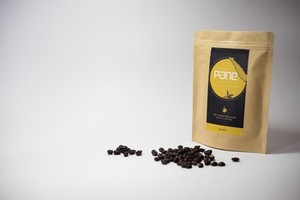
More chances to get what you want

Kopi Luwak (Civet Cat Coffee) Certified 100% Arabica Indonesian Kayumas Estate

Kopi Luwak (Civet Cat Coffee) Certified 100% Arabica Indonesian Kayumas Estate

Kopi Luwak (Civet Cat Coffee) Certified 100% Arabica Indonesian Kayumas Estate

Kopi Luwak (Civet Cat Coffee) Certified 100% Arabica Indonesian Kayumas Estate

50g 100% Original Sumatera Kopi Luwak Civet Coffee Indonesia,Arabica,WHOLE BEANS

50g 100% Original Sumatera Kopi Luwak Civet Coffee Indonesia,Arabica, GROUND

100% Original Sumatera Kopi Luwak Civet Coffee Indonesia, Arabica, WHOLE BEANS

Authentic Gayo Arabica Luwak Coffee (Civet) Kopi Luwak Indonesia (Roasted)

100g, 100% Original Sumatera Kopi Luwak Civet Coffee Indonesia, Arabica, GROUND

Genuine 100% pure Arabica Wild Civet Coffee Kopi Luwak Fresh Roasted Beans 100g

250g,100% Sumatra WILD Kopi Luwak Civet Coffee Indonesia,Arabica,WHOLE BEANS

250g ,100% Sumatera WILD Kopi Luwak Civet Coffee Indonesia, Arabica, GROUND
Luwak kaffee preis
Coffee Luwak is considered one of the finest coffees available. The majority of commercial Indonesian Kopi Luwak (civet
coffee) is from Java and Sumatra or Sulawesi, and made from Robusta beans; Tastes of Indonesia sources its Kopi Luwak
exclusively from the high quality Arabica plantations and is therefore considered to be of superior quality to other varieties.
Related to the cat but belonging to the viverridae family, the same as the mongoose, it has a weasel-like face, cat-like body
and long tail with fur which may be either gray or brown with various darker markings.
territory. This substance is collected to be used as a perfume fixative, main supplies coming
from the Indian civet (v. zibetha).
consuming the finest and best ripe coffee cherries. These pass through the civet and are
collected in the droppings. Beans emerge without their fleshy coating, but entire and appear
undigested. They are extracted by washing and carefully cleansed before being processed.
their gut undigested, even entire with their cherry-like coating, the beans being washed and processed in the normal fashion
to make this highly selected top grade coffee. Some thought that the actual situation was that the best beans were selected
according to the type civets would eat, and these processed without having actually been eaten by the civet cats.
suggested the beans are slightly digested during their passage, to the extent that an enzyme process has broken down
some of the proteins allowing them to leach out, resulting in a less bitter coffee. Speculation is that a lactic acid
fermentation may be a factor, however any attempts at trying to mimic the process have so far failed.
the jungles of Bali Indonesia,
smooth coffee with an
earthy, syrupy texture & a
hint of chocolate
The raw and cleaned beans are placed in a large stone mortar ( lesung ), pounded with a large wooden pole to loosen beans
from their covering shells and then winnowed by hand in a flat basket like tray to separate the beans. Beans are then
carefully hand-picked to remove any that are damaged, roasted in special local ovens and ground as required.
beans to loosen shells
shells form beans
the purest, genuine Kopi Luwak available. Made from the finest arabica
beans from the coffee plantations of Indonesia, Taste of Indonesia Kopi
Luwak has a smooth unique flavour of true epicure coffee.
In USA prices can reach $1000/kg
Store coffee in an airtight container in the fridge.
Luwak kaffee preis
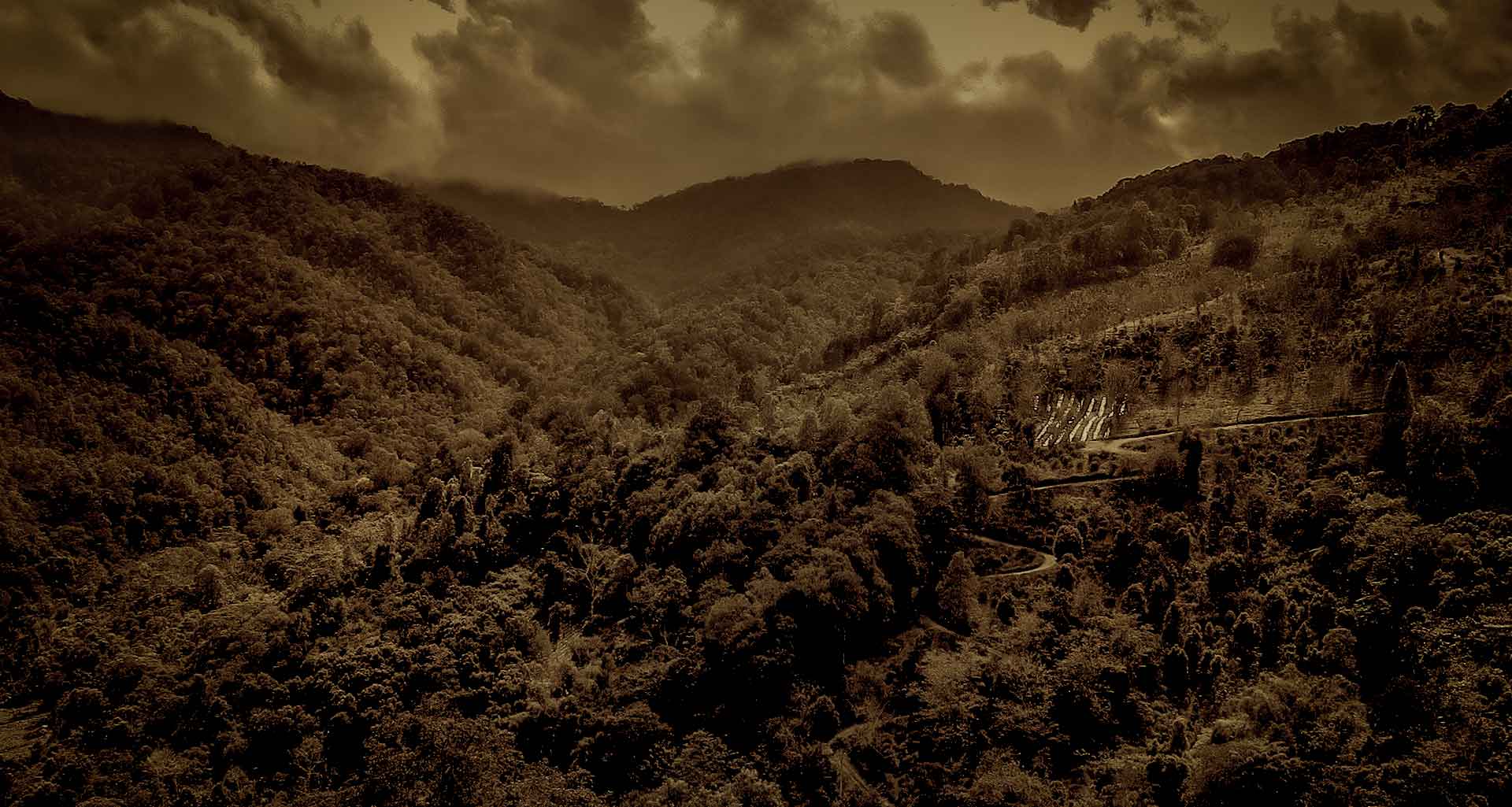

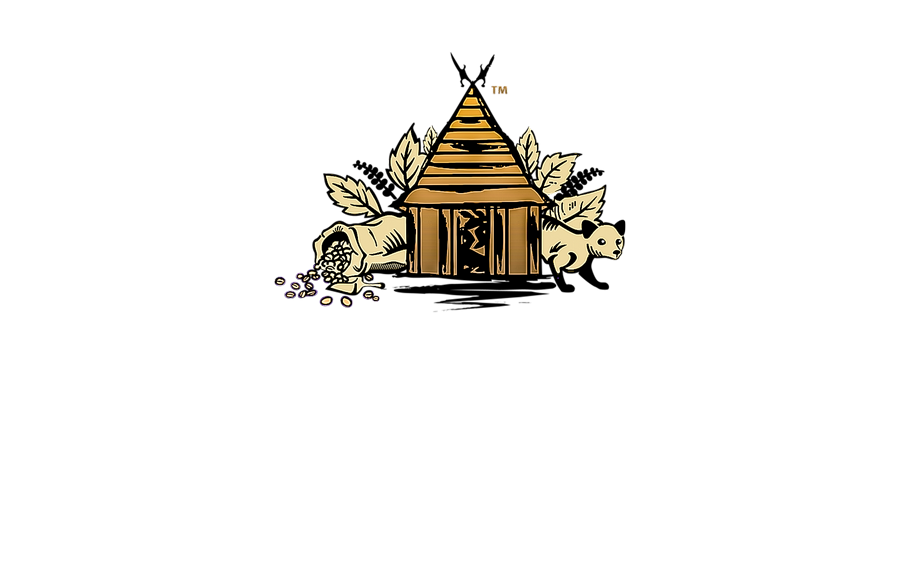
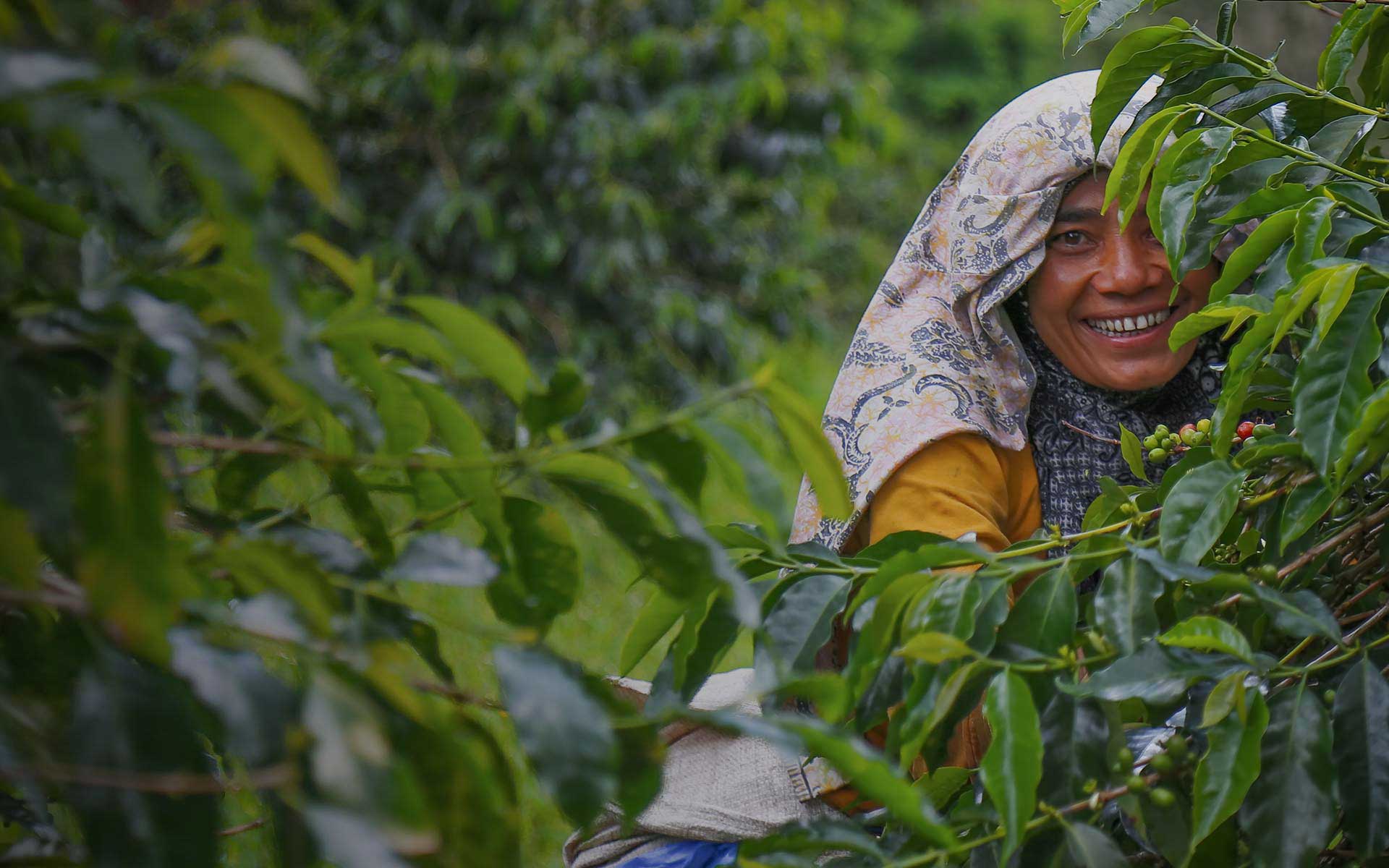



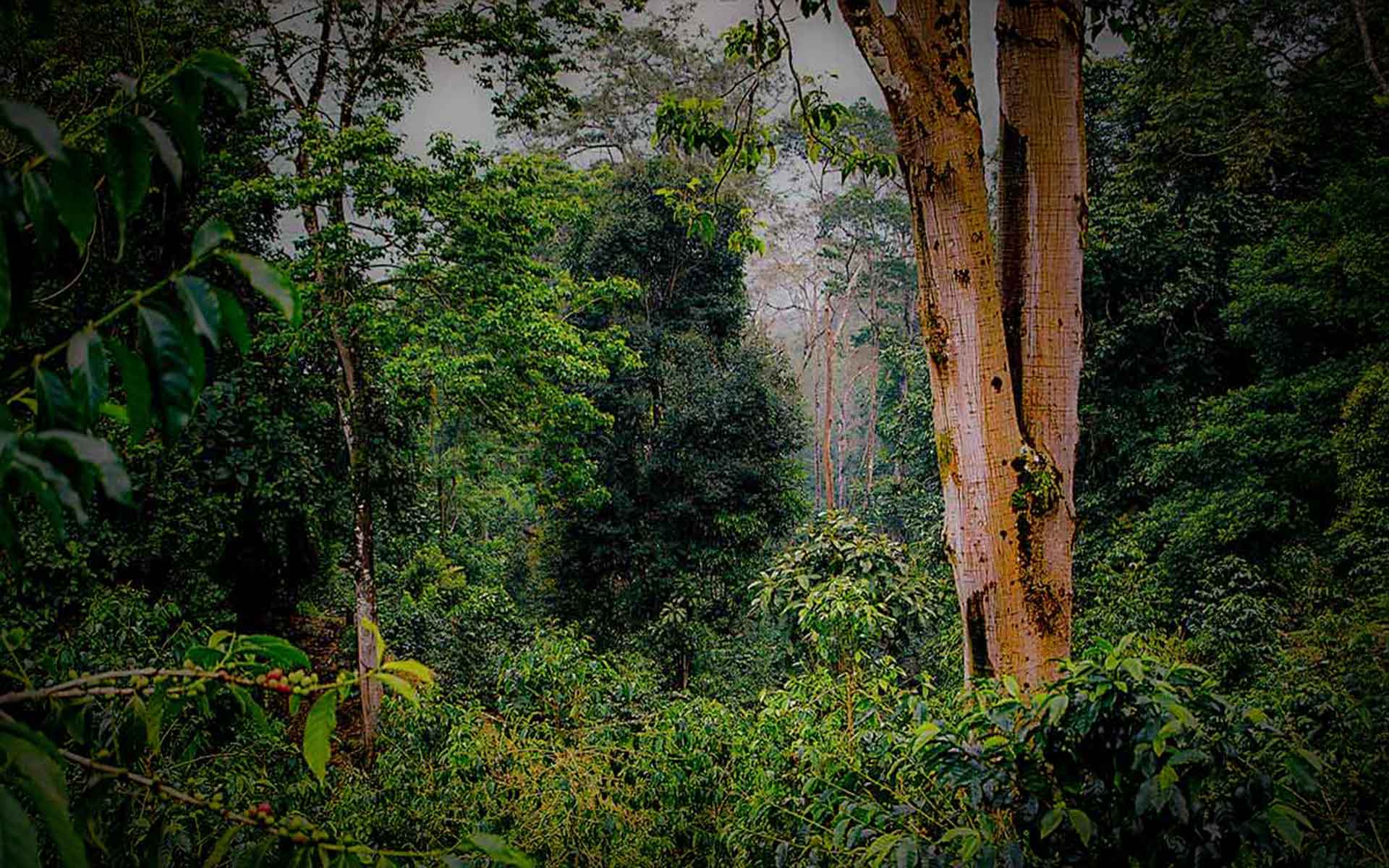

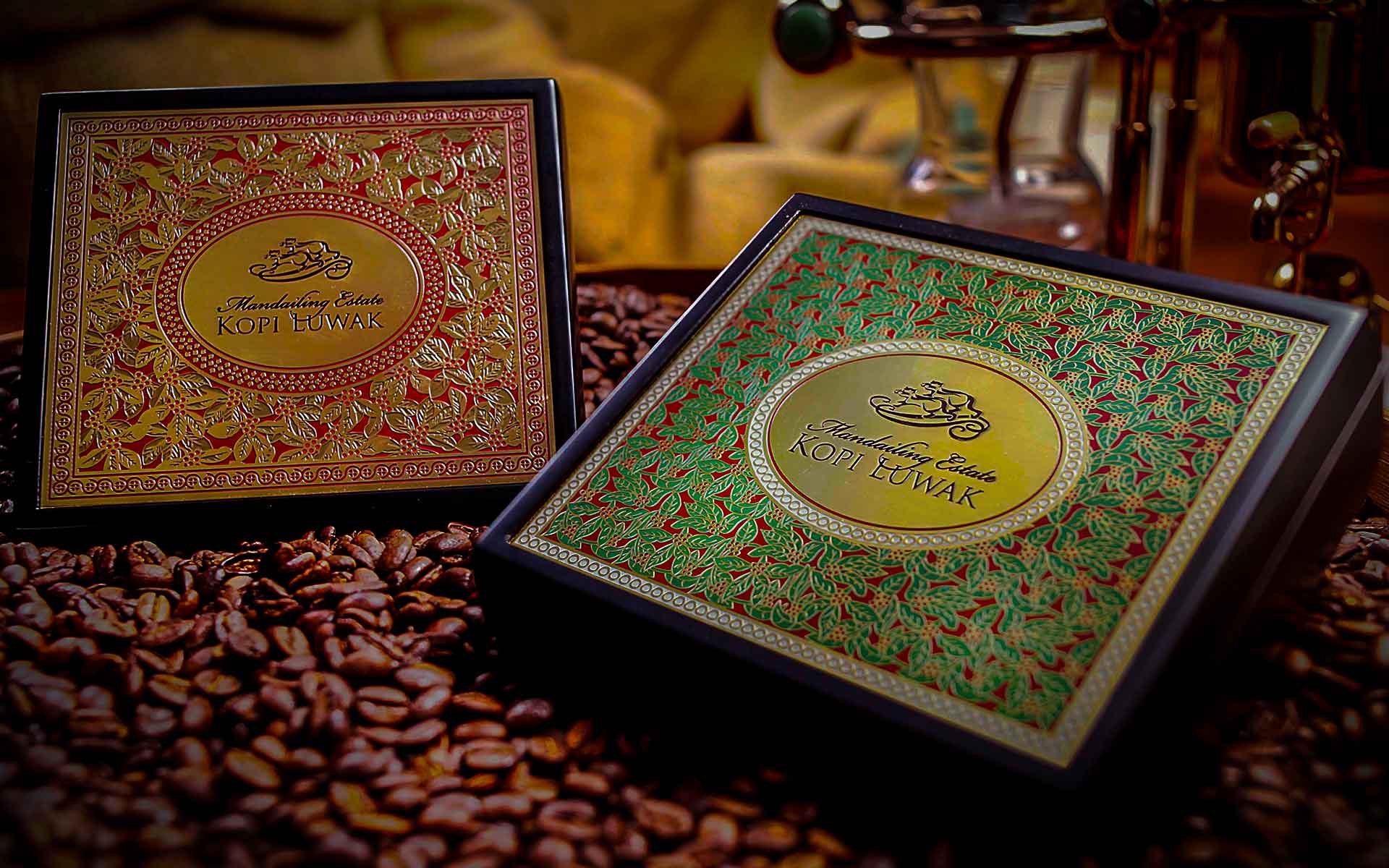



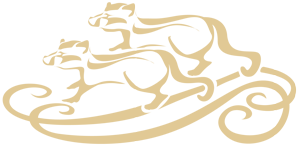

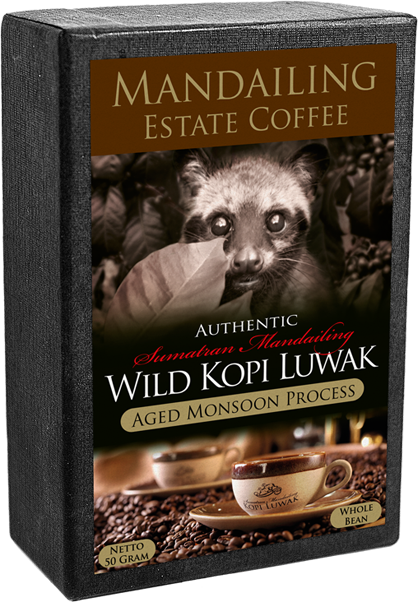

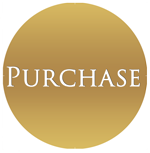
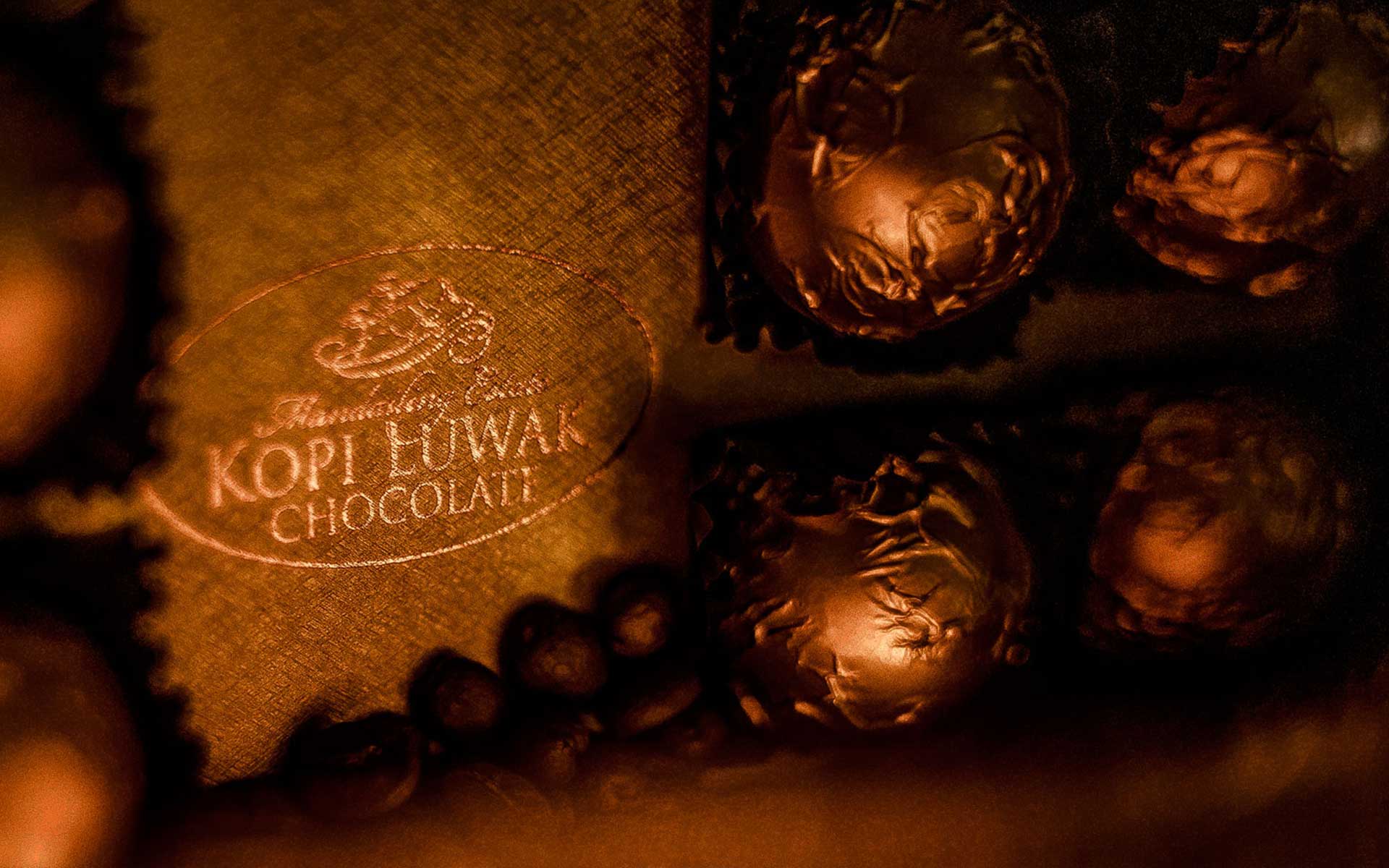
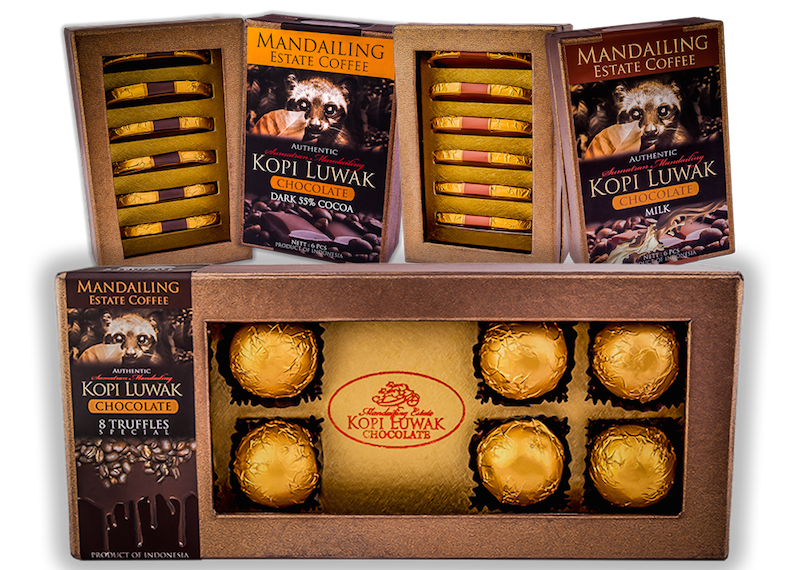



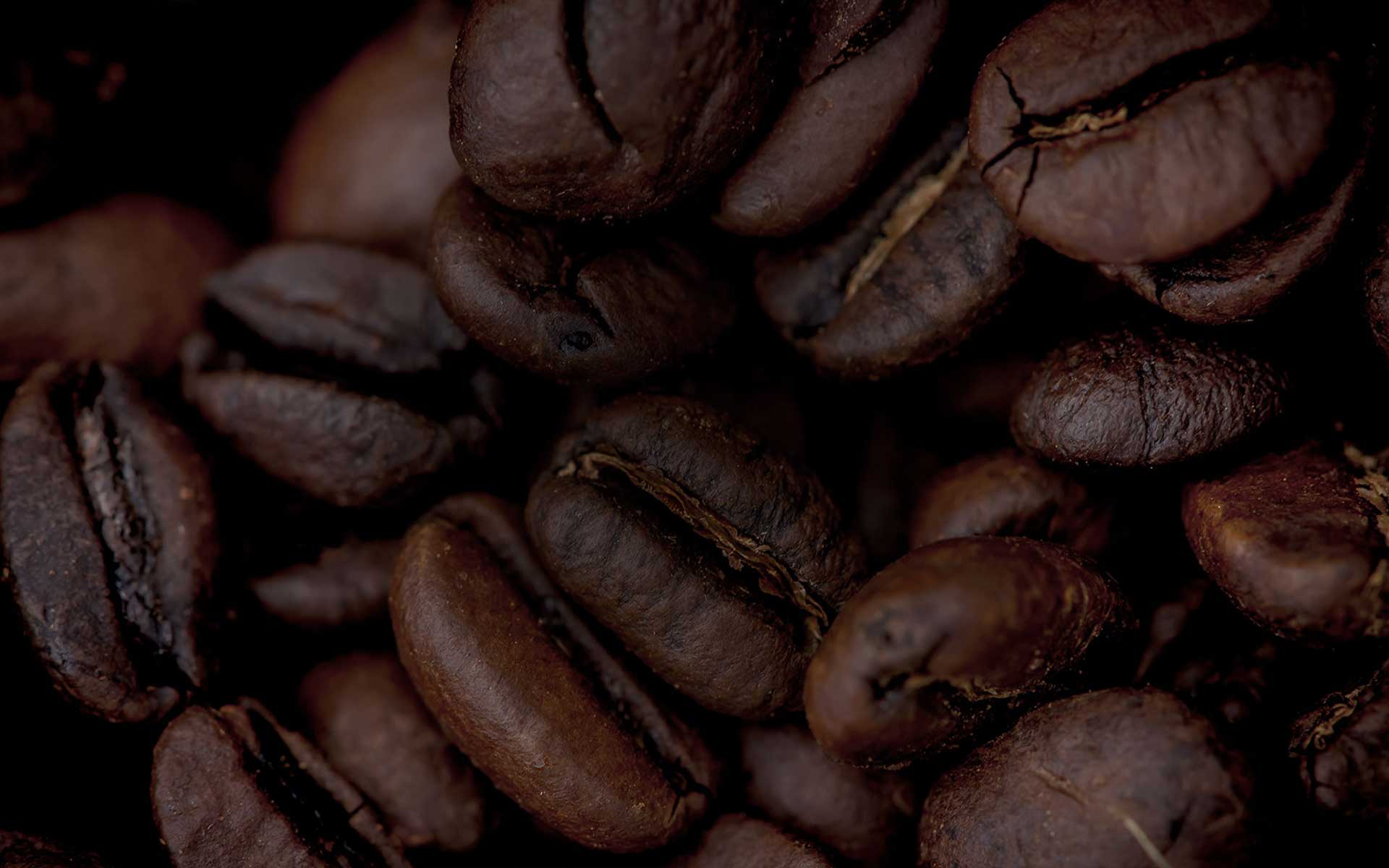










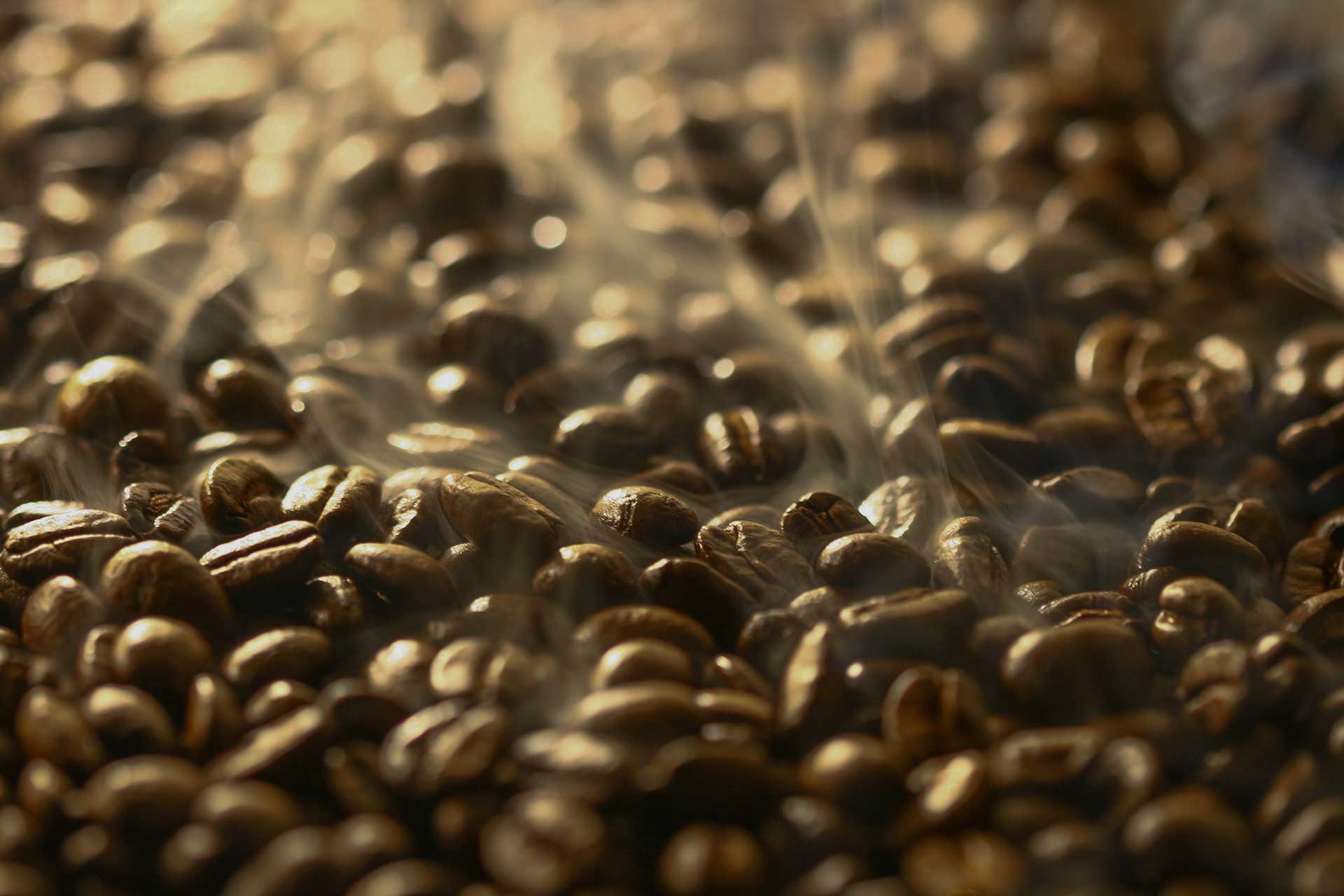
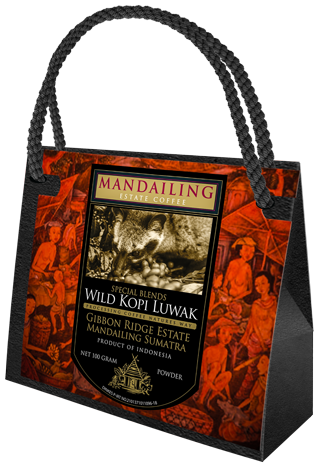

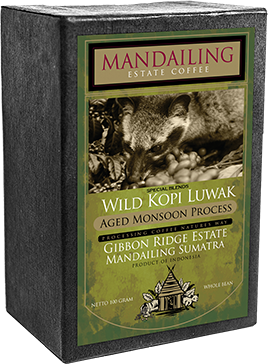
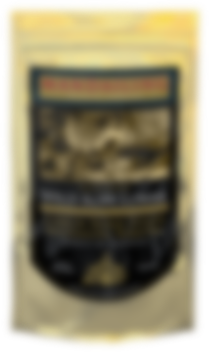

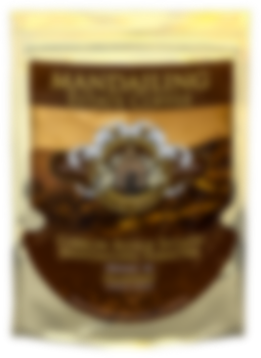
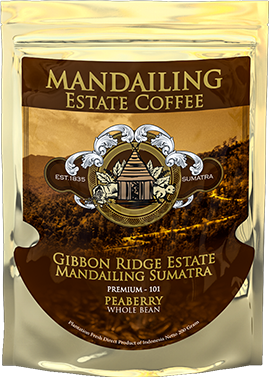
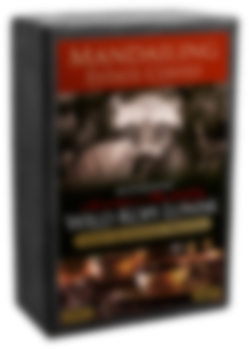



Mandailing Province in North West Sumatra’s highlands has been regarded as one of the world’s premium coffee regions since the 17th century.
Mandailing Coffee has a unique cup signature, this is due to the subtle combination of the volcanic soil only found in the area and the humid jungle climate. Introduced to the region by the Dutch in the 19th century.
This coffee was thought to be extinct, until Sumatran-born, Ibu Yanti Anita, revived the original Mandailing Estate Coffee plantation 20 years ago.
By rediscovering Mandailing Estate Coffee, Ibu Anita has also restored a rich chapter in Sumatran history.
OUR COFFEE IS OUR HERITAGE
“Hello, I’m Ibu Yanti Anita.
As an Indonesian this land and its people are extremely important to me.
This is why I regard the Mandailing Estate as a caretaker of this precious, natural resource.
In this role, the Estate is committed to socially and environmentally responsible practices,
whereby we work together with local communities to nurture this region’s very rare and delicate coffee.
Our most recent regeneration project has seen 1000 native Sumatran Cedar trees planted on the Estate and we have established a 90 hectare reserve for the wellbeing of the Estate’s fauna and flora.
Ultimately, all our practices aim to provide you with the highest quality, sustainable, eco-friendly coffee in the world.”

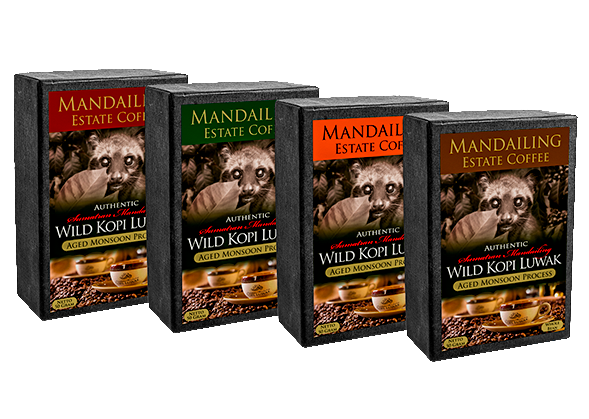
Introducing Mandailing Estate’s
WILD PROCESSED KOPI LUWAK
Our coffee is unique and rare, with its history and reputation relying solely on the existence of Indonesia’s civet cats, the Luwak. These native cats roam our plantation freely and feast on only the finest cherries from our coffee plants.
The delicate results are collected every day. We then process and roast the beans to create the world’s most sought-after coffee.
Mandailing Estate Coffee produces Wild Kopi Luwak Pure, Wild Kopi Luwak Aged Monsoon, and Kopi Luwak Blend. Our coffee is available in whole bean; medium grind; powder; drip filter; and espresso grind.
Mandailing Estate is now proud to announce
WILD KOPI LUWAK CHOCOLATE RANGE
Mandailing Estate Coffee presents Indonesia’s finest coffee and kakoa fusion.
This chocolate produces a very balanced blend of Gibbon Ridge’s finest Kopi Luwak and Kakoa from the island of bali.
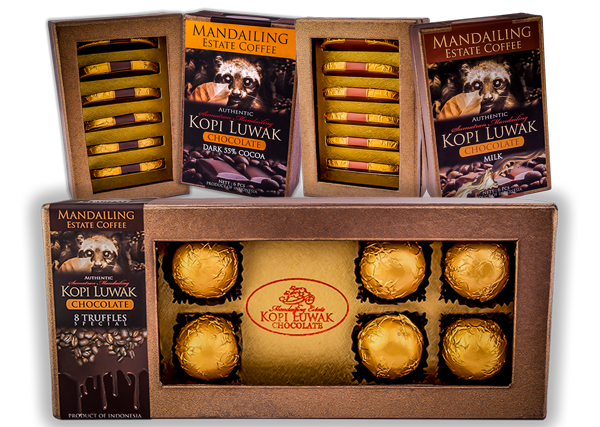
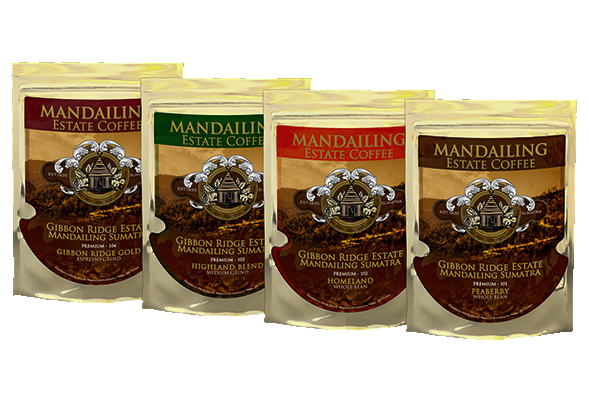
At Mandailing Estate we are very proud of our
PREMIUM ARABICA BLENDS
Organically growing only the highest quality shade grown Arabica coffees including the original typica trees dating back to the early 1800s.
These original cultivars ensure that we at Mandailng Estate can share with our loyal customers the unique signature of a truly original single origin Sumatran Mandailing Coffee.
Our Home Our Commmuntiy
Puncak Siamang, ( Gibbon Ridge ) Sumatera Utara.
Find us In Bali!
EXCLUSIVE WILD KOPI LUWAK GIFT BOXES
Whole Bean (Green box)
Medium Grind (Red box)
2 x 50gm Premium Kopi luwak

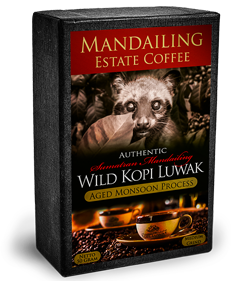
WILD KOPI LUWAK AGED MONSOON PROCESS
Long lasting and
Available in Whole bean, Medium Grind, Powder & Drip filter

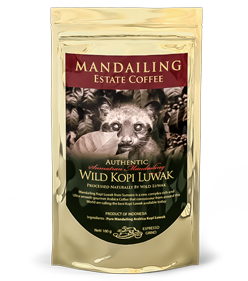
PURE WILD KOPI LUWAK
Available in Whole Bean, Medium & Espresso grinds

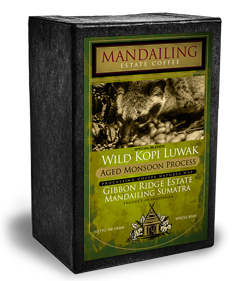
KOPI LUWAK BLENDS IOOg
Deep and complex flavours
Lingering, sweet aftertaste
Avalialble in Whole Bean, Medium Grind, Powder & Drip Filter

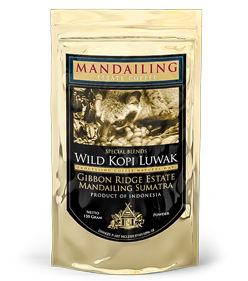
KOPI LUWAK BLENDS 150G
Round complex heavy bodied coffee
Lingering Deep & sweet aftertaste.

MANDAILING ESTATE KOPI LUWAK CHOCOLATE!
Our newest addition to the family!
Indonesia’s finest Coffee & Cacao Meet to create Mandailing Estate Coffee’s Pure Kopi luwak Chocolate.
Available in Milk and Dark using Sumatran Cacao and Vanilla.

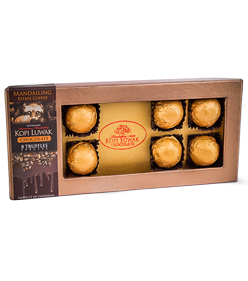
KOPI LUWAK CHOCOLATE TRUFFLES
100% Mandailing Estate Kopi luwak, Sumatran Cacao and Vanilla.
8 Mandailing Estate Coffee kopi Luwak Chocolate Truffles

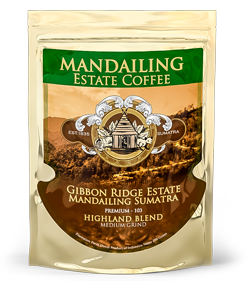
OUR PREMIUM ARABICA BLENDS
Mandailin Estate’s Gibbon Ridge first origin coffees
A cup of green tea for the mind / 一杯绿茶的心灵
Books, Travel, Sports, any kind of Mindfuck …

Post navigation
Coffee Tasting: Indonesian Wild Kopi Luwak
“Wieselkaffee” nennt man diesen Kaffee. Einen der teuersten Kaffees der Welt. Der Anbau der Bohnen selbst scheint weniger teuer. Den Preis treibt die Veredelung der Bohnen, denn gerne spaße ich, dass jener Kaffee “durch die Meerkatze ging”. Genau genommen handelt es sich bem Kopi Luwak nicht um eine Meerkatze, sondern um eine Schleichkatze; genauer: einen Musang. Zwar artverwandt, jedoch im engeren Sinne keine Katzenart. Doch zurück zu der Kaffeeverdelung beim Kopi Luwak. Jene indonesische Musangart frisst die Kaffeekirschen und scheidet die unverdaulichen Kerne – die eigentliche Kaffeebohne – wieder aus. Durch die Verdauungssäfte fermentiert die Bohne bereits. Diese Bohnenreste werden gesammelt und dann weiter verarbeitet.
In der Speicherstadt Hamburg bot sich mir die Gelegenheit jenen Kaffee zu probieren.
Optik: Hellbraun, klarer/heller als normaler schwarzer Kaffee
Geruch: Malzig süßlich
Geschmack: Schmeckt ganz anders als normaler Kaffee, sehr mild, weich, nach Karamell
Den Kaffee zu probieren und dabei die Geschmacksnerven voll auf das Getränk zu fokussieren war es wert 11 EUR auf den Tresen zu legen. Geschmacklich hat mich der Kaffee nicht umgehauen. Allerdings verbuche ich es als eine Lebenserfahrung.
Allein die meditative Konzentration auf Geruch, Geschmack etc. hat sich gelohnt – sollte sich auch, denn die Stempelkanne war teuer genug 😉

Indonesian Wild Kopi Luwak
weasel coffee – strictly speaking, a palm civet (https://en.wikipedia.org/wiki/Asian_palm_civet) unrelated to a weasel. Belongs to the GROUP of cat-alike however not directly cat or weasel.
Not like usual coffee – much better than the regular ground coffee that I get served when drinking coffee (I usually drink espresso – coffee only when served at the hom eof s-.o. else).
Frshly ground good taste, aromatic and mild. Slightly sweet smell, bit like caramel on the tongue.
all in all an experience worth the 11EUR for two cups (one big cup)
Coffee Arabica Price:
Coffee Arabica Price is at a current level of 3.299, up from 3.157 last month and down from 3.787 one year ago. This is a change of 4.50% from last month and -12.87% from one year ago.
- Category:Agriculture and Livestock
- Region: N/A
- Report:Commodity Markets Review
- Source:World Bank
Coffee Arabica Price Chart
Coffee Arabica Price Historical Data
There is no data for the selected date range.
An error occurred. Please try again by refreshing your browser or contact us with details of your problem.
Coffee Arabica Price Summary
- Last Value: 3.299
- Latest Period: Jul 2017
- Updated: Aug 3, 2017, 10:03 EDT
- Frequency: Monthly
- Unit: USD per Kilogram
- Adjustment: N/A
- Value Previously: 3.157
- Change From Previous: 4.50%
- Value One Year Ago: 3.787
- Change From One Year Ago: -12.87%
- First Period: Jan 1960
- First Value: 0.9409
- Notes: International Coffee Organization indicator price for mild Coffee Arabicas, average of New York and Bremen/Hamburg markets, ex-dock.
Professional Data Verification
Need to see the raw data? Download the original data directly from our source.
I:CAP Excel Add-In Codes
- Indicator Code: I:CAP
- Indicator Name: =YCI("I:CAP","name")
- Latest Value: =YCP("I:CAP")
- Last 5 Values: =YCS("I:CAP",,-4)
To find the codes for any of our financial metrics, see our Complete Reference of Metric Codes.
Access our powerful Excel Add-in with a YCharts Professional Membership. Learn More.
Luxusartikel
Friday, March 5, 2010
Die teuersten Produkte der Welt
Luxus-Sachen, ist das ein ausschließlicher Blog, wo wir alle Arten von Einzelheiten und Luxusartikeln ausstellen. In dieser Gelegenheit beschreiben wir eine Liste mit den Sachen unglaublichsten und teureren ausführlich, die auf unserem Planeten existieren, oder die verkauft worden sind oder zu einigen Preisen desorbitantes angeschafft wurden.
Um anzufangen, dass den teuersten Boden der Welt zu entdecken auf euch scheint, er in London ist, in 36.800 Euros metro2 sich aufstellend.
Sie folgen ihm: Monaco (35. 000 euros/m2), New York (25. 600 euros/m2), Hong Kong (19. 700 euros/m2), und Tokio (17. 600 euros/m2).
Wenn wir im Boden für ländliches Haus sehen, wäre das St. Jean Cap Ferrat (Frankreich), die teuerste der Welt (30.300 euros/m2).
Sehen wir schon mit dem Boden das teuerste Haus der Welt. 105 Millionen Euro dieses englische Häuschen - "Updown Court" - in Surrey, England. Das Eigentum führt die jährliche Liste der Wohnungen nach 'Forbes' an.
Er hat 103 Zimmer, 23 Hektar von Garten, fünf Schwimmbecken, 22 Marmorbäder und etwa 4.600 mts. wolkige Quadräte.
Burj Al Der Arab, in Dubai. DAS TEUERSTE HOTEL der Welt, seiner Preise schwingen sie zwischen 1500 Dollars das Zimmer billigere in 30.000 Dollars. Gelegt auf einer Kunstinsel in 280 Meter des Strands, nimmt er in Erde durch eine Straße Verbindung auf. 202 suites Doppelte. Er hat Form des gebauten Schiffes, auf solche Weise, wie er keinen Schatten im Strand gibt, einen Heliopuerto hat, kommt er an.
Das teuerste alte Auto ist die Prozeßakte Vereinigung von Audi, Jetzt bleiben sie nur 5 von diesen, Euro 15 Millionen in einer von ihnen Versteigerten.
Das teuerste moderne Auto, ist das Bugatti Veyron in 1.400.000 Dollars.
Der teuerste Bikini der Welt. Hergestellt mit 150 auf Platin gesetzten Diamanten, ist sein Wert 30 Millionen Dollar und es hat Susan Rosen für Victoria's Secret entwickelt. Die Diamanten Steinmetz Typ D, sind sie von Marken frei, was ihnen einen einzigartigen Glanz gibt.
DER TEUERSTE KAFFEE: Das ist "Kopi Luwak" und sein Preis schwingt zwischen den 750 und 1.000 Euros das Kilo. In den Cafeterien von New York dienen sie die Tasse es durch 40 Dollars. "Kopi Luwak" oder "Kaffee der Zibetkatze" wird über die Exkremente der Zibetkatze, eines Katzen-von Indonesien erlangt. Diese Art der riesigen Katze ernährt sich von Früchten des Kaffees und vertreibt das Korn, ohne zu verdauen. Die Resammler des Kaffees nehmen die Körner zwischen den Exkrementen der Zibetkatze heraus, waschen sie und rösten, aber leicht, um die Geschmäcke nicht zu beschädigen, die sich während der Verdauung entwickelt haben.
DIE TEUERSTE HANDTASCHE: Louis Vuitton, hat 'Louis Vuitton Parchwork Bag' geschaffen, der 30.000 Euros kostet und er wurde von Mark Jacobs entwickelt.
TEURERES Mobiltelefon: Hergestellt von GoldVish, der Schweiz, hat 1 ins Buch Guiness seinen Wert ungefähr Million von Euros hineingebracht. Ein authentisches Goldjuwel, Diamanten und Haut des Krokodils.
DER TEUERSTE CHAMPAGNE. Das ist "Cuvée Belle Époque" von Perrier-Jouët - zugehöriger seit 2005 zu Pernod Ricard - und kostet 1.000 Euros. Das ist ein Blanc von Blancs (erzeugt nur mit der Traube Chardonnay).
DAS TEUERSTE RESTAURANT: Es wird "Aragawa" genannt worden und ist in Kobe, Japan. Sein billigster Teller nimmt keine 300 Euros herunter und die Spezialität ist der Ochse von für das schmackhafteste Fleisch gehaltenem Kobe, der Welt. Dieser Ochse trinkt Bier nur und lebt in einer Aufmerksamkeit und erlesenen Sorgen, sein Geschmack ist einzig.
DER TEUERSTE HAMBURGER:
DAS TEUERSTE QUADRAT:
"1917 gemaltes Porträt von Adele Bloch-Bauer" durch Gustave Klimt.
Der Magnat Ronald Lauder hat durch 135 millones$ Das Porträt von Adele angeschafft - Gemahlin des jüdischen Zuckerindustriellen - war Ursache des Disputs zwischen Österreich und Erben von Bloch-Bauer, da
das Quadrat wurde von den Nazis im Zweiten Weltkrieg beschlagnahmt, während die Bloch-Bauer 1938 fliehen sollten.
"Nicht. I Knebelbart Majesty", ist er geschaffen 1872 in Auftrag von Reina Victoria und seinem Preis 195.000 Euros
Seine Herstellung dauert ein Jahr und es werden etwa zweihundert Bestandteile als Sandelbaum, Jasmin, Vanille, und Rosenvielfalten von Frankreich, Bulgarien oder Ägypten gebraucht.
Das Füllen des Kristalls von Bacarat der 500 schließt einen weißen Diamanten ml, von beschränkter Herstellung, ein und sein Korken bildet die Krone der Königin nach.
Die Weiße Trüffel ist einer der seltensten und geschätzten Früchte kann vermögen 6.000 Euros das Kilo zu kosten.
Sie können nicht gezüchtet sein, nur es bleibt Kühle ein paar Tage erhalten, nur er befindet sich in sieben Begrenzungen von Italien und einer von Slowenien. Ein Millionär von Hong Kong hat 160 tausend Dollars durch ein Exemplar bezahlt
Der "Diamant der Hoffnung" eine der seltensten Gemmen und von blauer Farbe, wurde er von 5,68 Millionen Euro in einer Versteigerung von Sotheby'S in Hong Kong verkauft.
Er wiegt 45,52 kilates ab und es ist Luis XIV und Maria Antonieta durch die Hände gegangen.
Das elegante schwarze Kleid, das Audrey Hepburn in "Frühstück mit Diamanten zur Schau gestellt hat" wurde er in Christie'S von 700.500 Euros versteigert.
DER TEUERSTE NACHTISCH:
Der teuerste Whisky. Die Ausarbeitung dieses einzigen Whiskys wurde von Abreisen von The Dalmore der Jahre 1868, 1878, 1926 begriffen
und 1939. Der Preis ist als 39.000 Euros ober.
DIE TEUERSTE JACHT: Es ist der in 116.7 Millionen geschätzte "Alysia" Dollar im Maße wie die Zeitschrift Forbes. Er hat 85.3 Meter von Schiffslänge, 14.44 Meter von Ärmel, 3.7 Meter von Hohlsaum, 18 Kabinen, Unterkunft für 36 Reisende, 2 Motoren der 2750 Lebenslauf und 690-Liter-Konsum / Stunde.
Der teuerste Cowboy der Welt, hat sich Der Levi'S, "Type 1", in den teuersten verwandelt, da, Materialien um es zu machen, als Gold, glänzende und Rubine des brasilianischen Juwelierladens H Stern gebraucht wurden. Sein Preis 85.000 Dollars.
Die Schuhe Lobb sind zu die teuerst der Welt.
Jetzt werden sie zwischen 700 und 1000 Euros von einem Paar oder 3500 Euros durch einige Tatsachen in Maßnahme bezahlt.
DER TEUERSTE TEE: Er wurde in der jährlichen Versteigerung von Zhejiang, China, 14 tausend Dollars von nur 200 g vom grünen bekannten Tee wie "Longjing" oder Lunge des Tees bezahlt.
DER TEUERSTE WEIN: Der für einen privaten Sammler bezahlte teuerste ist
"Chateau d'Yquem 1787" das 80 tausend Dollars gekostet hat.
Die teuerste Flasche, die ein Restaurant bezahlt hat, ist ein "Romanée-Conti von 1875"
Sein Preis 75.000 Dollars
DIE TEUERSTE MARMELADE: Er kostet 2.100 Dollars und sie wurde gemacht, um den 125. Jahrestag seiner Fabrikanten zu feiern.
DIE TEUERSTEN ZIGARREN: Das sind die "Cohiba" beschränkte Ausgabe und es kosten 15.000 Euros die Kiste.
Sie sind nach Frankreich stammende aus Havanna, Kuba, gekommen sie messen zwanzig Zentimeter und sind in einer wolkigen Hautkiste des sattelfesten Strichs geparkt.
DAS TEUERSTE WASSER: Mit Preisen, die seit den 30 bis 370 Euros, durch eine spezielle Ausgabe gehen, ist das Wasser Bling H2Ose von der Welt am schicksten.
Seine Exklusivität wurzelt in der "außerordentlichen Reinheit" und seinen Einlegearbeiten der Kriställe Swarovski in verschiedenen Farben.
DAS TEUERSTE EIS: Er wird in der Eisdiele "Serendipity" von New York verkauft.
Sein Preis ist 1.000 Dollars, und ist in einem Pokal des Kristalls von Baccarat mit einem Goldteelöffel gedient.
DIE TEUERSTE UHR: Der teuerste ist im Verkauf "Sky moon Tourbillon" von Patek Philippe.
800 tausend Dollars. Die teuerste Uhr der speziellen Ausgabe ist "Tour D'Ille" des Hauses Vaucheron Constantin. Es wurde Jahrestag der Firma von den 20 gemacht, es wurden 7 allein gemacht und er kostet 1.500.000 $
DAS TEUERSTE ÖL: Das ist das "Öl von Argan". Oder liquides Gold von Marokko. Die Flasche des extra jungfräulichen der 20 kann cl. zum 17 kommen.
Der Argan ist ein Baum, der sich in Marokko befindet und bis 10 m von Höhe misst.
Die Frucht hat die Ausdehnung einer Walnuss und seine Neugier ist, dass die Ziegen es sammeln, die
sie essen es und spucken dann die Knochen der Früchte, die der Schäfer aufhebt.
Es geht um von Mattel co-entwickelte Barbie Diamante, und Von - Beers, um die 40 Jahrestag zu feiern. Sein Anzug schließt etwa 160 Diamanten und einige Stücke in weißem Gold der 18 kilates ein. Sein Verkaufspreis: 85.000 Dollars.
Das teuerste versteigerte Handgelenk, war gerufene Barbie in Midnight Red, von dem 13.442 Euros bezahlt wurden
DER TEUERSTE KOGNAK: Die Gruppe der Weine und französischer Liköre "Remy Cointreau" hat den teuersten Kognak der Welt zu einem Preis von 7.000 geworfen
DAS TEUERSTE BIER: Es wird "Tutankamon" genannt worden und wird nach dem Rezept wiedergeerlangt durch ausgearbeitet
Archäologen von Cambridge im Tempel der Sonne von Nefertiti, in Ägypten.
52$ wird er sein Wert die Flasche und von Auftrag gemacht.
Das teuerste Bier der beschränkten Ausgabe ist Samuel Adams Utopias.
Es wurden nur 8.000 Flaschen 2003 hergestellt. er kostet 147 Euros die Flasche.
DER TEUERSTE KÄSE: Es ist ein Käse Roquefort, der sich in einer schwedischen Farm ereignet.
Er hat geschaffen, für diese skandinavische Vielfalt bei zu zahlen
500 Euros das Kilo.
DAS TEUERSTE GEWÜRZ: Der spanische Safran Des Flecks, ist ein zerbrechlicher Anbau, Sammlung ist in Hand von einer veilchenblauen Rose.
Er wird zwischen Oktober in November, von 3 bis 10 Personen, seit den 7 des Morgens und den 4 des Nachmittags in schneller Form gesammelt, damit die Blume ganz nicht geöffnet wird.
Kg kostet aprox. 2000 Dollars im Kommissionär.
Die teuerste "Sache" der Erde, ist auf dem Planeten nicht ist in Augenhöhle in 360 Kilometer Ist die Internationale Raumstation (ISS) noch in Bau, sein Wert gehört fast 100 Milliarden von 2010 beendetem Euros.estará und dann wird er seit der Erde sichtbar sein, das wird das glänzendeste Objekt im Firmament nach dem Mond sein.
- Die teuersten Pralinen der Welt
- Alysia, die teuerste Jacht der Welt
- Der teuerste Duft der Welt
2 comments:
Also das teuerste Schiff ist eindeutig die "Eclipse". Sie ist 170 Meter lang, damit die längste Yacht der Welt, und kostete inkl. U-Boot, Raketen Abwehrsystem und anderen Spielereinen um die 800 Millionen bis zu 1 Milliarde Euro. Sie gehört einem russischen Öl Multimillionär. Den Typen, Bilder, Infos, die restliche Flotte und und und findet ihr bei Google unter "Yacht Eclipse Wiki".
Комментариев нет:
Отправить комментарий